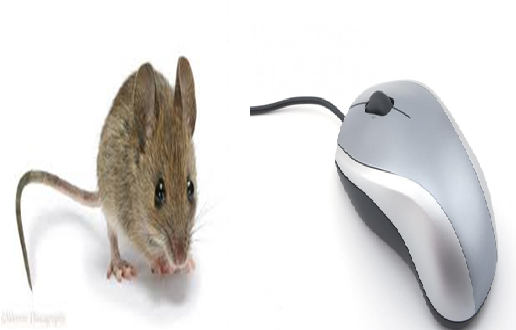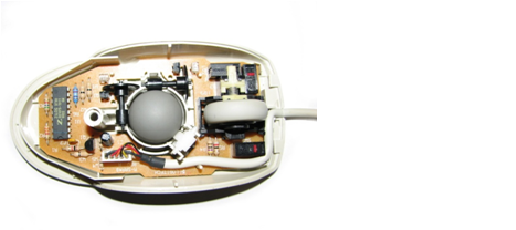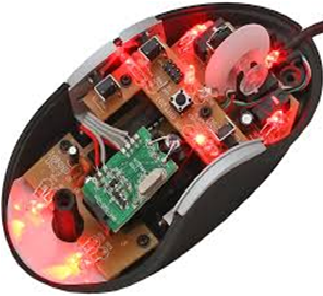Advertisements
Mouse and Trackball
- Both identical pointing device

Mouse
- Simple than keyboard (Simple click)
- Position of graphical cursor controlled by h/w & s/w
- Driver s/w generates & tracks cursor position
- Pressing mouse button – selection of options given by appln prog
- 2 / 3 button – function defined by s/w
- Transmits signal interpreted by mouse driver
- Action taken by system depends on OS & appln prog
- Gestures: single click, double click & drag
Types
- Mechanical mouse
- Opto-mechanical mouse
- Optical mouse
Mechanical mouse
-
Small round rubber ball touches mouse pad – rotates on mouse move
-
Two flywheels inside touching ball senses horizontal & vertical movements
- Also connected to resistive element forming mesh of fine black cross hairs on mouse moves, The ball translates movements into electrical signals.
- Simple & cheaper & Needs routine maintenance

Opto- mechanical mouse
- Ball & light sensitive semiconductors generate signals
- No wire mesh
- 2 right angled rollers with slotted perforated wheels
- One side of hole – Led & other side photodiode/transistor for photosensor
- On mouse move, ball rotates & rollers rotate slotted wheels.
- Light is alternatively blocked & allowed
- Photosensor generates series of pulses
- longer life & better reliability
- Periodic cleaning to remove dust & dirt

Optical mouse
- No ball or rollers
- Special mouse pad with grid
- Mouse movement tracked by LEDs & light sensitive transistors
- Expensive
- Better accuracy & high reliability
- No moving parts & no maintenance
Trackball
- Mouse turned upside down
- Ball present on top & moved with fingertips
- Bigger than mouse ball
- Better resolution
- Less space
- Convenient in car / aeroplane where notebook PC/laptop is used
- Some keyboards have built-in trackball
